Overclocking
Whether it's the propagated 1-click overclocking via Zotac's software or a real manual overclocking with suitable tools- the limits of this card are identical to those of the competitors. With an adjustable Power Target of 140%, the card approved almost 230 watts and was already slowed down by the voltage. We were able to increase the GPU clock by 180 MHz and the memory clock by 150 MHz to achieve a stable result over a longer period of time.
Temperatures and clock rates
First, we compare the achieved start and end values for temperatures and GPU clock (boost) in tabular form:
| Initial |
Final value |
|
|---|---|---|
| Open Benchtable | ||
| GPU Temperatures |
29 °C | 53 °C |
| GPU clock | 1860 MHz | 1784 MHz |
| Ambient temperature | 22 °C | 22 °C |
| Closed Case | ||
| GPU Temperatures |
30 °C | 57 °C |
| GPU clock | 1974 MHz | 1784 MHz |
| Air temperature in the housing | 22°C | 40°C |
| OC (Open Benchtable) | ||
| GPU temperatures (approx. 2530 rpm) | 29 °C | 47 °C |
| GPU clock | 2101 MHz | 2088 MHz |
| Ambient temperature | 22°C | 22°C |
Overview Graphs: Temperatures vs. Clock
For better illustrations now again the respective courses considering our timeline of a total of 15 minutes each for the warm-up time.
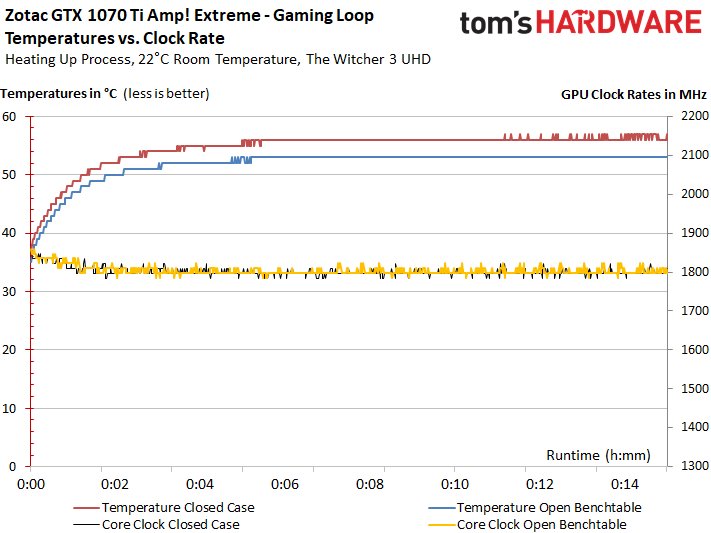
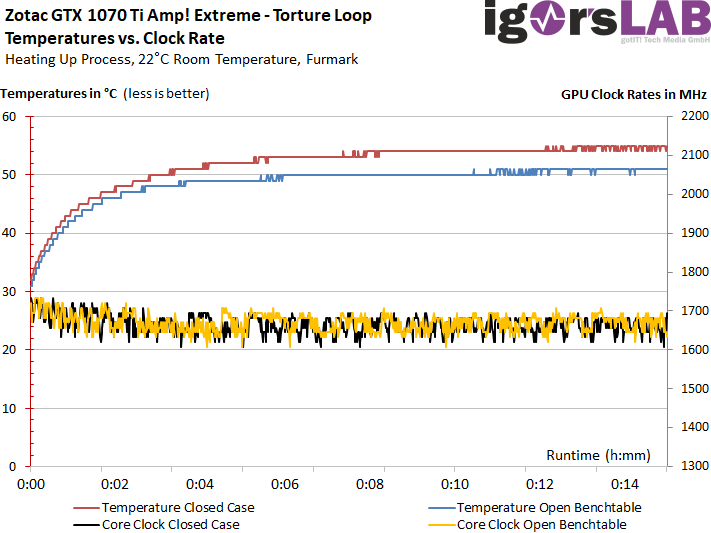
Thermal analysis of the back of the board
Finally, we consider the thermal analysis of the respective load states.
Gaming and overclocking
We see that pretty much all areas stay pretty cool with the gaming loop, because the airflow is completely exaggerated. But we'll get there right away.
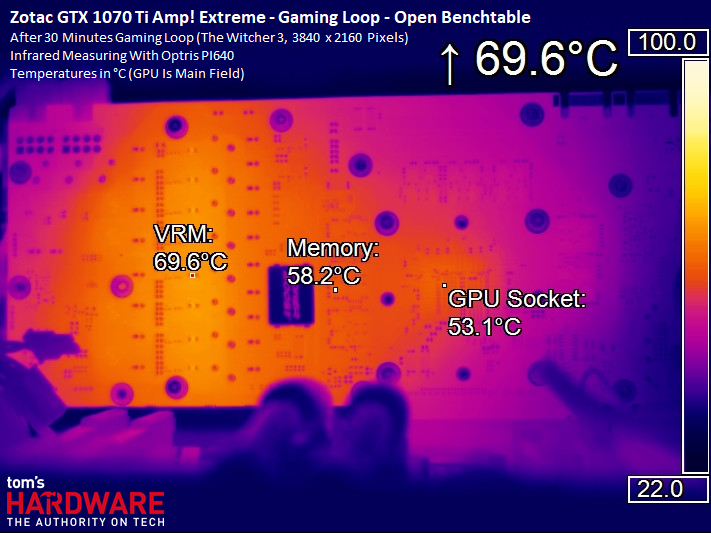
This also applies to the use in a closed housing, where we average around approx. three degrees higher temperatures.
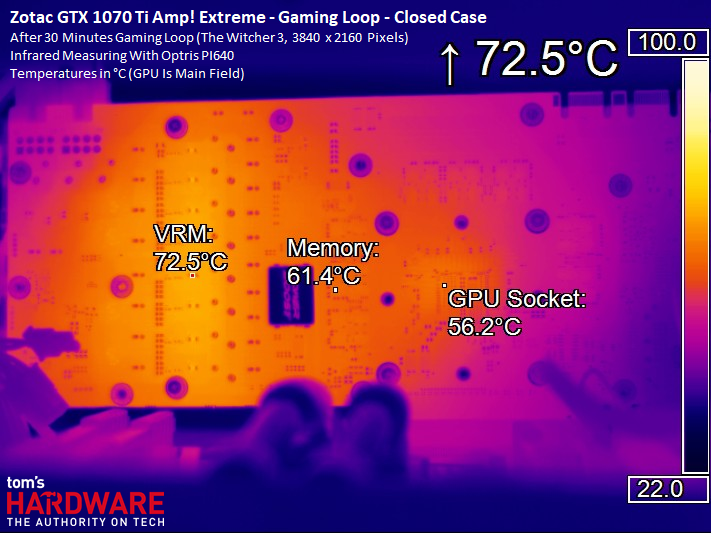
If we overclock at most, but leave the fans to themselves and close the housing, this draught is sufficient at then approx. 228 watts power consumption completely to freeze everything down to the foundations.
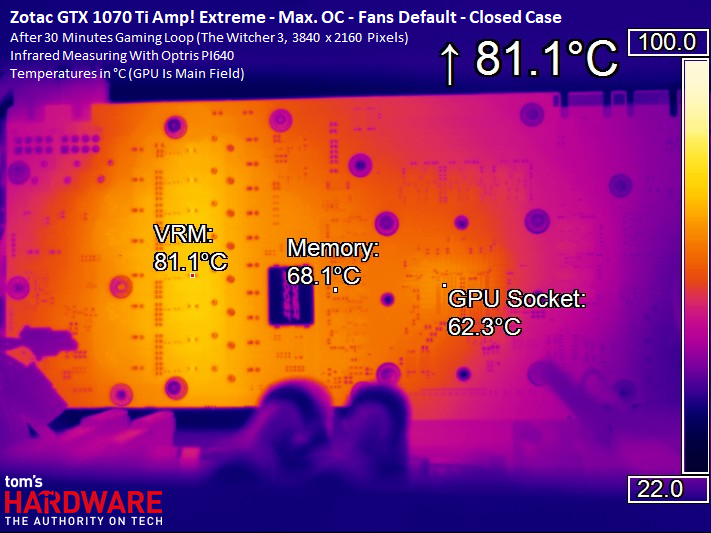
The stress test shifts the temperature load more towards memory and memory VRM, but everything stays almost as cool as the gaming loop
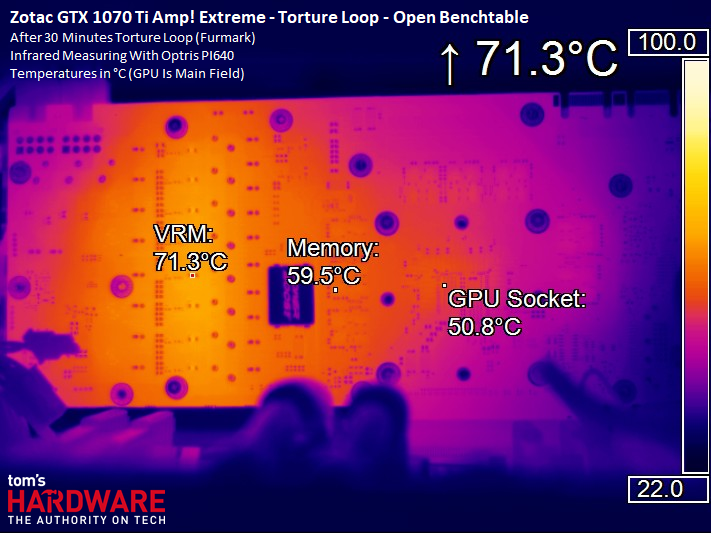
Also in the closed housing, this time it is approx. three degrees more at the neuralgic points, nothing more.
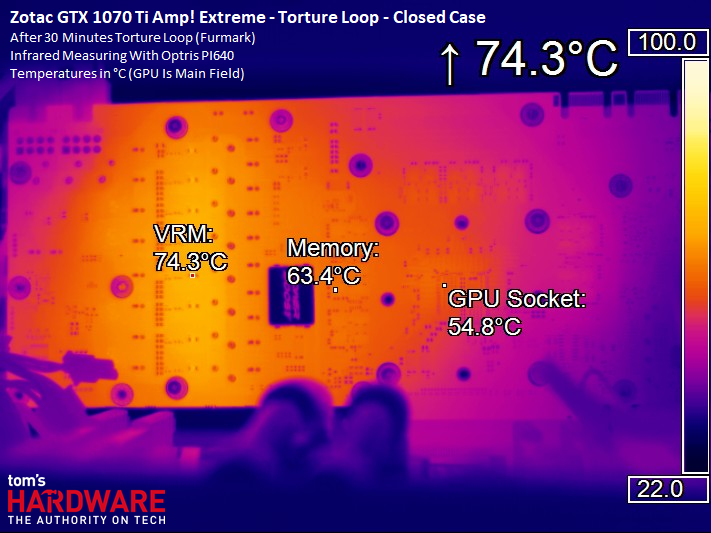
































Kommentieren